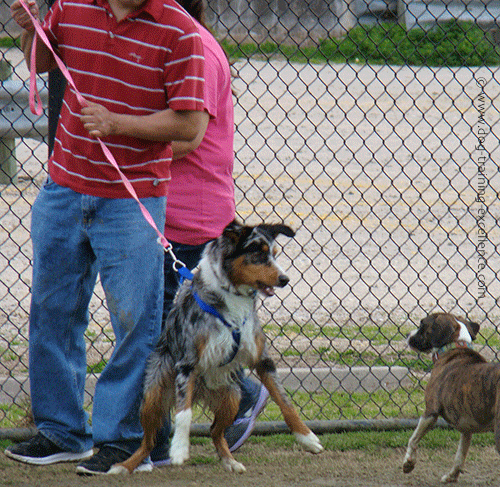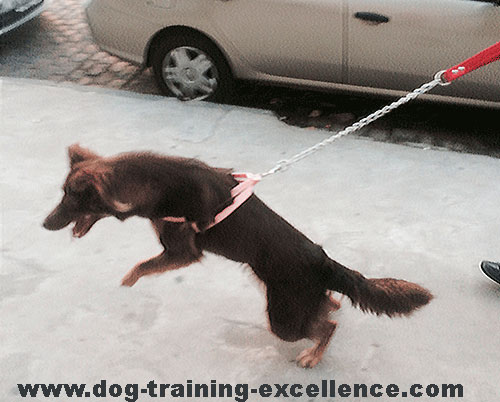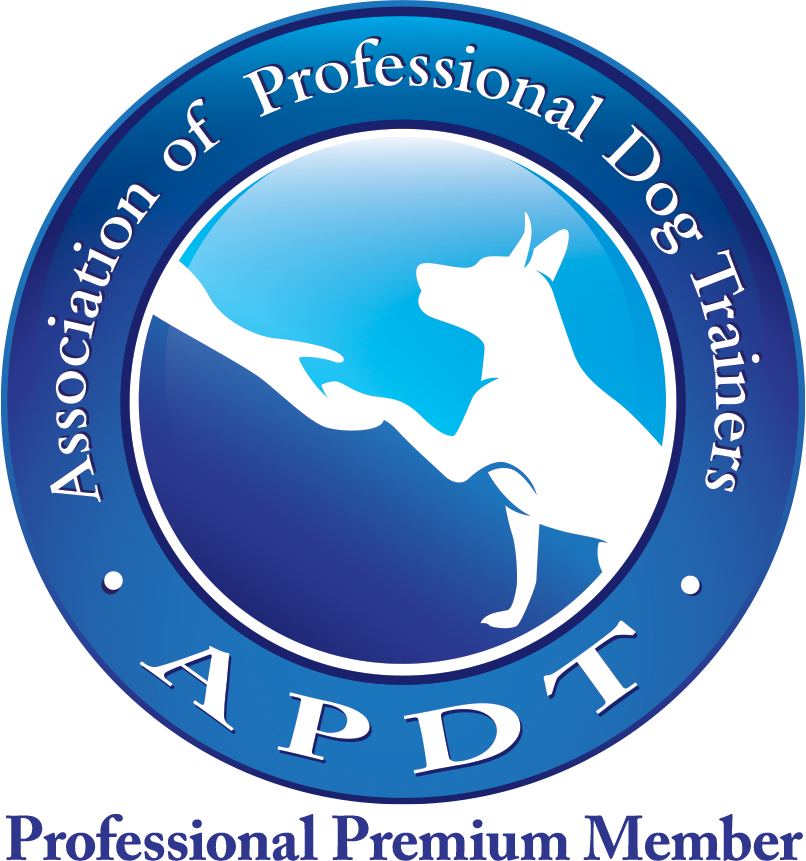I try to write my posts as unbiased as possible and recommend the products I consider to be useful and the best. I use affiliate links, this means that–at no extra cost to you–I can make a commission on a purchase you make after clicking on them. As an Amazon Associate I earn from qualifying purchases.
Dog Leash Training
Manage your out of control pet during walks.
Dog leash training can help you enjoy your walks with your dog. Some dogs will naturally take to walking nicely on the leash, however many dogs develop a tendency to pull on it. Sometimes pulling on the leash is so much that walks are no longer fun.
If you are reading this advice is probably because your furry best friend tends to get REALLY excited when out for walks. Some dogs go nuts when they see a cat or a squirrel. Other dogs go bunkers when they see another dog. And yet others simply pull on the leash all the time.
This article is mostly geared towards dogs that are completely out of control. If your dog only pulls on the leash a little bit, I recommend you teach your pet to behave on walks with the step-by-step exercises outlined here.
If you have tried many things already and don't know what else to do about dog leash training, then keep on reading and practice every step.
Dog leash training tips
- If your dog has aggression issues I highly recommend you find a dog trainer in your area. It will be safer for both you and your hound.
- Figure out why your dog suddenly goes crazy. Does he want to interact and play with the other dog? Does he have a high prey drive and wants to hunt a cat or squirrel? Training your dog requires teaching as well as understanding.
- Bring a high value reward to walks. It can be a toy your hound loves or it can be the most yummy treat, chicken or beef your pet ever tasted. Whatever you pick ONLY use it for emergencies while leash training your dog.
- Learn dog body language to predict when your dog is about to react and stop it before it happens!
Use a "no-pull" harness
No-pull harnesses are designed for dogs not to pull based on their anatomy. They do not
hurt the dog in any way, in fact they are better than a regular collar
that can still damage your dog's neck. They work with the same principle as the head-halter, but I like harness better because they do not require previous training and are safer. There are excellent designs and models available, here are a few of the best ones:
 |
Durable, ergonomic and has two places to attach the leash. You must attach the leash on the chest ring to get the no-pull effect. If you attach it on the back, the dog will pull as usual. This harness also comes with a handle on the back to catch your dog more easily if needed. It comes in different colors and sizes. |
|
| |
 |
Also very durable and comes with life-time guarantee. It has 2 leash attachments (you must use the one on the chest for no-pull effect) and also a seat belt loop. |
|
| |
 |
PetSafe Easy Walk Harness is one of the original no-pull harnesses in the market. It is a simpler design but still very effective. |
Dog leash training: damage control
If you are out practicing walking nice on the leash and suddenly your canine friend goes berserk, you need to GET OUT of that situation. As much as you can, dog leash training should be done while the dog is calm, far away from a trigger.
I never recommend pulling on the leash or punishing your pet in any form (this could actually lead to aggression problems in the future).
Instead try to distract your pet and get him to voluntarily (or semi-voluntarily) follow you.
Use your emergency reward as a lure! Do not give it to your dog until he is willingly following you and the distraction is out of sight. Only then reward your pet for following you out of that situation.
Use your voice (happy and high pitched) and your body language (run the other way, pat your legs in a friendly way) to get your canine friend to follow you.
Damage Control = Take your hound out of the situation ASAP
Dog leash training: "out of control" prevention strategies.
Did you figure out why your hound goes crazy? Can it be solved?
Here are a few examples:
Example 1: If your dog wants to interact with other dogs, you can try taking him to a dog park. Let him romp around and get that out of his system. If he enjoys playing with other dogs, then add dog parks as a regular outing.
Once your dog is used to playing with other dogs, it's time to practice walking on a leash. Put your dog back on the leash (at the dog park) and walk around the park. Reward your pet for walking close to you (with treats) and try to lure him away when he wants to interact with other dogs. Practice Walking Nice on a Leash.
Practicing at the dog park, after letting him play, will make the walking nicely exercises easier. It will give your pet plenty of opportunities to succeed, which is a must for learning! As he gets better, you can try them on regular walks as well.
Example 2: If your pet wants to chase things (cats, squirrels, etc) I recommend you teach him the command "leave-it" and to "ask for permission". Only when these commands are reliable you can use them outside! In the mean time you must be alert when walking your canine friend.
If you see any "chasing opportunity" walk the other way and do not let your pet see it! You must pay attention to the environment on walks. As a last resort use the damage control technique explained above.
Example 3: If your pet shows aggression, excessive barking and
growling towards other dogs then find a dog trainer that can help you
one on one. You will learn invaluable information (The Association of
Pet Dog Trainers [APDT] website provides a search for professional and positive dog trainers).
In
the mean time, take your hound out of any scary situation as soon as
possible and as gentle and happy as possible. Use the damage control
technique outlined above and never loose your control. Show your dog you
are a confident leader that can get him out of there safely.
Knowledge, patience and practice. And you will have a well mannered pet!
Share your tips and anecdotes below!
Home > Leash Training your Dog > Dog Leash Training for Out of Control Dogs






New! Comments
Questions? Anecdotes? Tips? Leave me a comment in the box below.